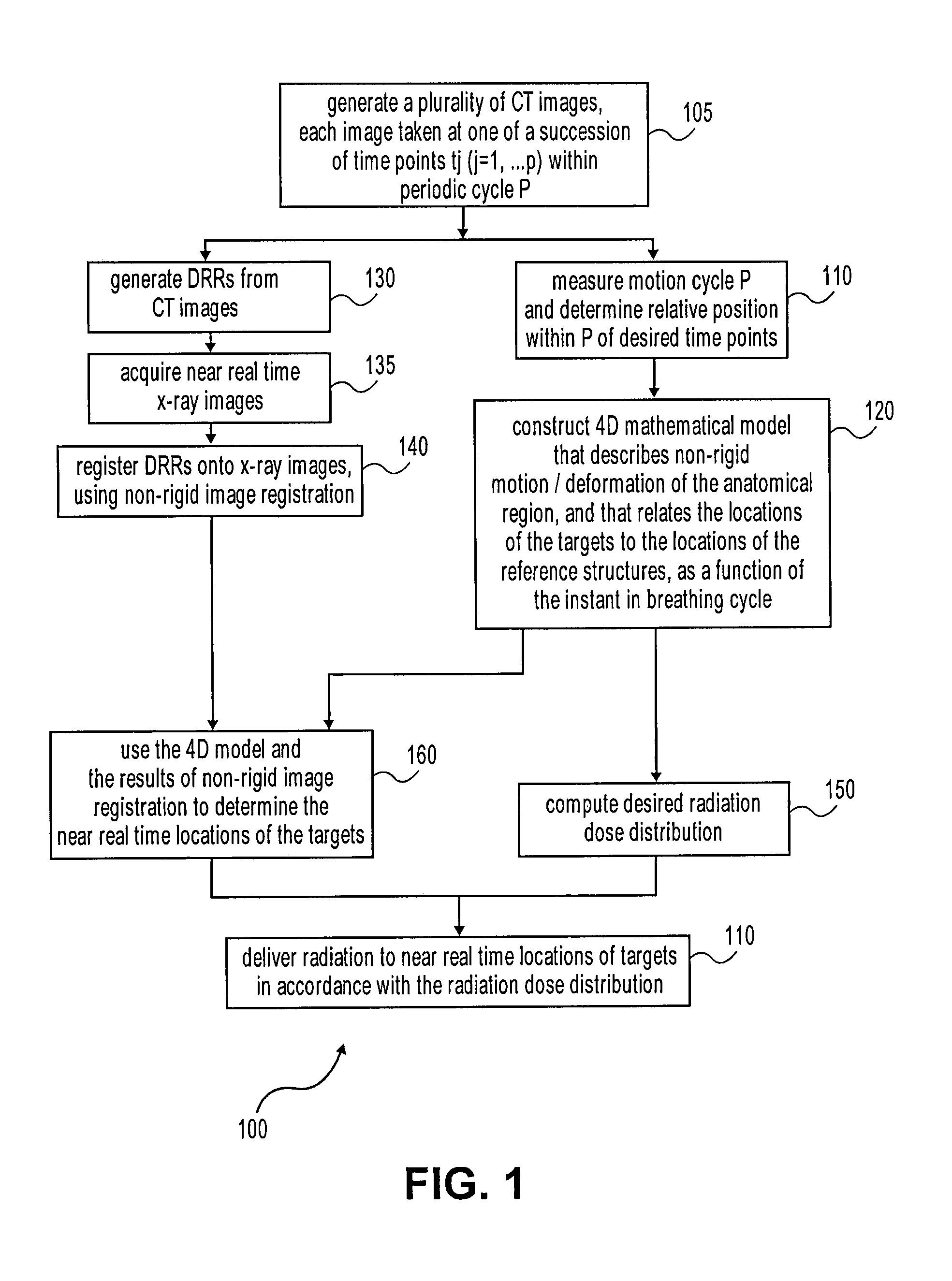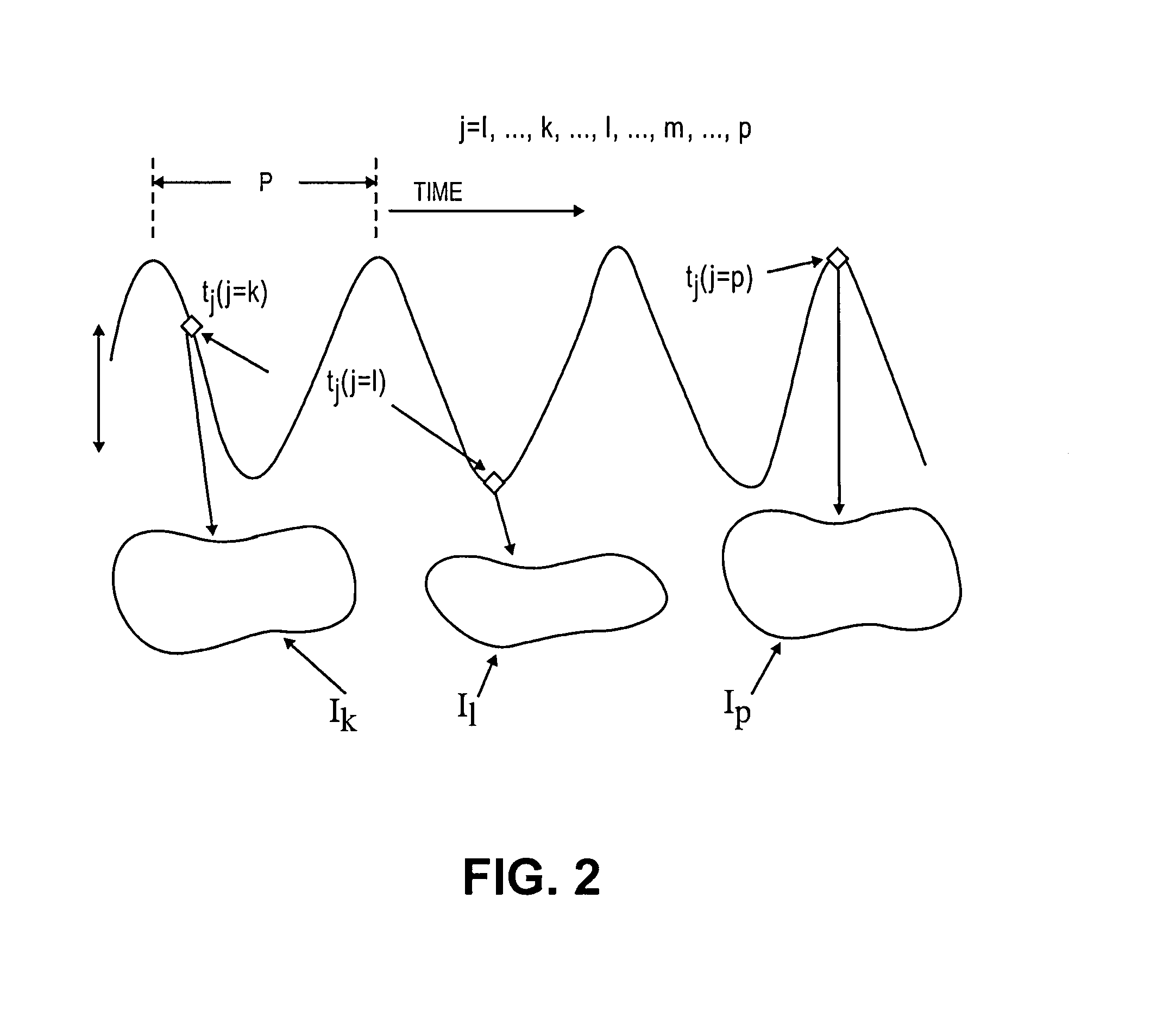Dynamic tracking of moving targets
- Summary
- Abstract
- Description
- Claims
- Application Information
AI Technical Summary
Benefits of technology
Problems solved by technology
Method used
Image
Examples
Embodiment Construction
[0032]A number of techniques are described for dynamically tracking tumors / lesions in the human body that is undergoing motion. The methods are of principal use in radiosurgery, but may also be useful in other applications where it may be necessary to dynamically track parts of the anatomy that move, for example because of respiration or heartbeat.
[0033]Some portions of the detailed description that follows are presented in terms of algorithms and symbolic representations of operations on data bits within a computer memory. These algorithmic descriptions and representations are the means used by those skilled in the data processing arts to most effectively convey the substance of their work to others skilled in the art. An algorithm is conceived to be a self-consistent sequence of acts leading to a desired result. These acts require physical manipulations of physical quantities. Usually, though not necessarily, these quantities may take the form of electrical or magnetic signals cap...
PUM
 Login to View More
Login to View More Abstract
Description
Claims
Application Information
 Login to View More
Login to View More - R&D
- Intellectual Property
- Life Sciences
- Materials
- Tech Scout
- Unparalleled Data Quality
- Higher Quality Content
- 60% Fewer Hallucinations
Browse by: Latest US Patents, China's latest patents, Technical Efficacy Thesaurus, Application Domain, Technology Topic, Popular Technical Reports.
© 2025 PatSnap. All rights reserved.Legal|Privacy policy|Modern Slavery Act Transparency Statement|Sitemap|About US| Contact US: help@patsnap.com



